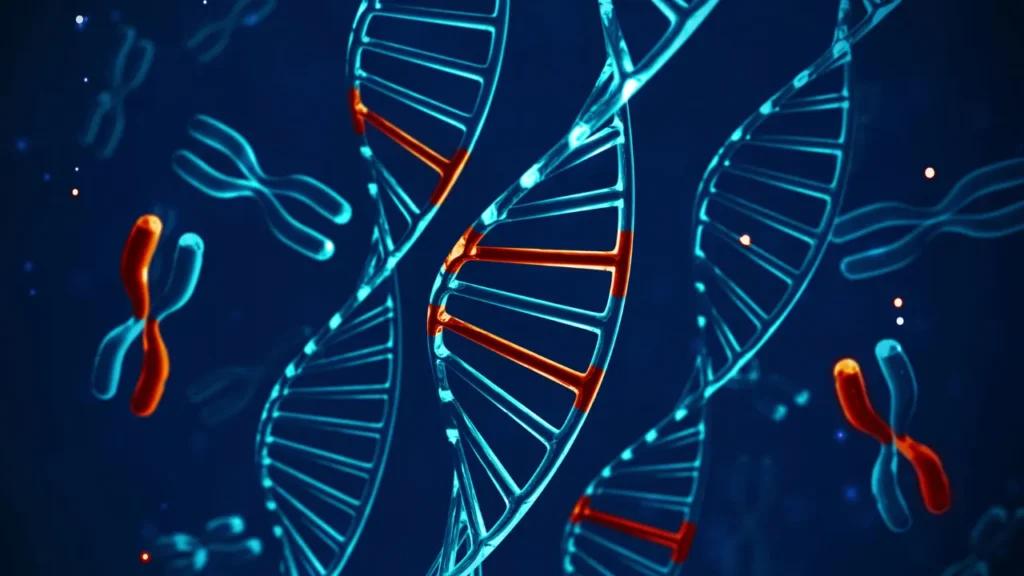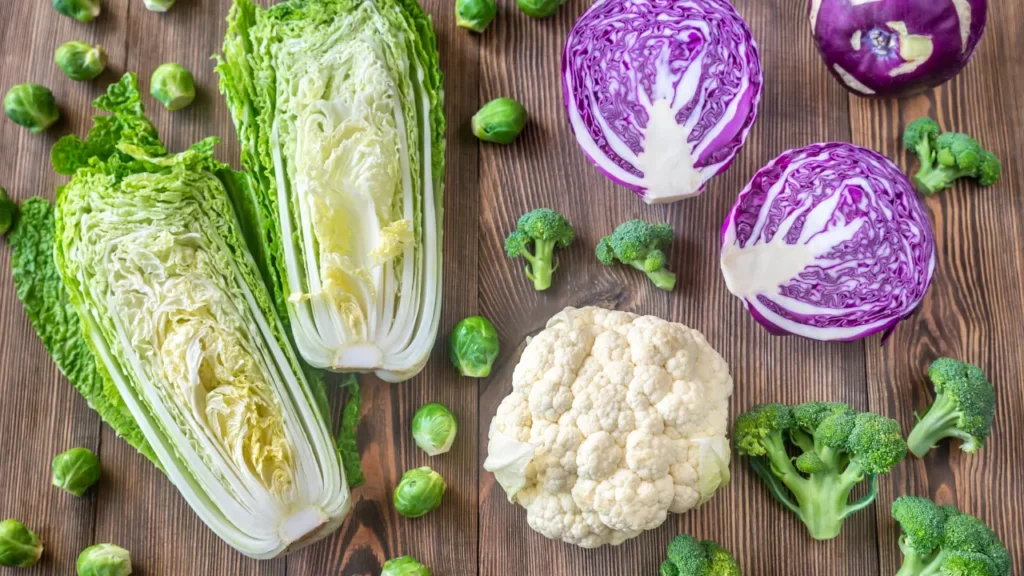The scientific community has been paying close attention to sulforaphane, a naturally occurring isothiocyanate that is primarily found in cruciferous vegetables like broccoli, Brussels sprouts, and cabbages, because of its potential health benefits, especially when it comes to neuroprotection and cognitive function enhancement. This article explores the molecular makeup of sulforaphane, as well as its health benefits, ideal dosage, adverse effects, possible drug interactions, and the best ways to use it responsibly. It is particularly relevant for people who are interested in using nootropic supplements to improve their focus, alertness, and cognitive function.
You May Also Like:
Should You Try CBD for Focus? Here Are the Facts.
Diamond CBD Gummies vs. Joy Organics CBD Gummies
Sulforaphane: Benefits, Dosage, Side Effects, Drug Interactions, and Other Important Information is an original (NootropicsPlanet) article.
Nature of Sulforaphane
A bioactive substance called sulforaphane is created when glucoraphanin, a precursor to glucosinolate found in cruciferous vegetables, is hydrolyzed by enzymes. This component is distinguished by its distinct bitter taste and strong sulfur smell, which are traits common to the cruciferous vegetable family, which includes Brussels sprouts, kale, and broccoli.
Depending on how it is prepared and processed, sulforaphane’s stability and bioavailability can change, thereby impacting its health effects.
Health Benefits of Sulforaphane
The health benefits of sulforaphane span from its protective roles against chronic diseases to its neuroprotective effects, highlighting its potential as a therapeutic agent.
1. Cancer Prevention: Sulforaphane has been extensively studied for its anticancer properties. It is believed to help prevent cancer development through several mechanisms, including the detoxification of carcinogens, the induction of cell cycle arrest, and the promotion of apoptosis in cancer cells. Furthermore, sulforaphane inhibits histone deacetylase (HDAC) enzymes, which are involved in the epigenetic regulation of gene expression and are often dysregulated in cancer cells.
2. Cardiovascular Health: Sulforaphane contributes to cardiovascular health by improving endothelial function and reducing oxidative stress and inflammation, which are risk factors for atherosclerosis and heart disease. It has also been shown to reduce blood pressure in hypertensive models, suggesting a potential role in managing hypertension.
3. Anti-inflammatory Effects: Sulforaphane’s ability to inhibit the NF-κB pathway reduces the expression of pro-inflammatory cytokines. This is particularly beneficial in chronic inflammatory conditions such as arthritis, where sulforaphane can help decrease joint pain and inflammation.
4. Detoxification: By inducing phase II detoxifying enzymes, sulforaphane enhances the body’s ability to neutralize and eliminate potential toxins and carcinogens. This detoxification support is crucial for reducing the risk of various diseases and promoting overall health.
5. Skin Health: Sulforaphane also shows promise in protecting the skin from UV radiation, thereby reducing the risk of skin cancer and photoaging. Its antioxidative properties help mitigate the oxidative damage induced by UV exposure, offering a protective effect against sunburn and DNA damage in skin cells.
The chemical makeup of sulforaphane allows it to interact with a wide range of biological pathways to provide a range of protective effects across the body, which accounts for much of its variety of health advantages. The promise of this chemical as a natural therapeutic agent is highlighted by its involvement in the prevention of cancer, cardiovascular health, neuroprotection, anti-inflammatory activities, detoxification, and skin health. Research on the mechanisms of action and health advantages of sulforaphane is still underway, but it is beginning to show promise for use in dietary plans and as a possible treatment for a number of ailments.

Chemistry of Sulforaphane
Sulforaphane (SFN) is an isothiocyanate that contains sulfur and is produced when glucoraphanin, a glucosinolate that is present in high concentrations in cruciferous vegetables, is hydrolyzed. The plant cell damage caused by chewing or chopping activates the enzyme myrosinase, which catalyzes the conversion of glucoraphanin to sulforaphane.
The chemical property that gives sulforaphane its biological activity is its isothiocyanate group (-N=C=S). Sulforaphane uses this group’s strong reactivity toward nucleophiles to its advantage while acting on the human body, especially when it comes to changing cysteine residues in proteins.
Physiological Mechanism of Action of Sulforaphane
The following are some of the core ways that Sulforaphane can affect the human body:
Activation of Nrf2 Pathway: Sulforaphane primarily works by stimulating the Nrf2 (nuclear factor erythroid 2–related factor 2) pathway, which is how it produces its advantageous effects. When Nrf2 is in the cytoplasm, it binds to Keap1 (Kelch-like ECH-associated protein 1), directing it toward ubiquitination and eventual destruction. The interaction between sulforaphane and Keap1’s cysteine residues causes Nrf2 to be released and translocated to the nucleus. The transcription of several genes encoding antioxidant proteins and enzymes, including as glutathione S-transferase and NAD(P)H quinone dehydrogenase 1, is triggered by Nrf2’s binding to antioxidant response elements (AREs) in DNA within the nucleus. To shield cells from oxidative stress and damage, antioxidant defenses must be upregulated.
Detoxification Enhancement: Sulforaphane stimulates the expression of phase II detoxifying enzymes, which enhances the body’s ability to detoxify. These enzymes, which include glutathione S-transferase, increase the solubility of toxic chemicals and carcinogens, facilitating their conjugation and removal.
Neuroprotective Actions: Sulforaphane directly exerts antioxidative and anti-inflammatory actions in the brain due to its capacity to pass the blood-brain barrier. These functions play a vital role in shielding neuronal cells from oxidative stress and inflammation, two factors linked to the development of neurodegenerative diseases as Parkinson’s and Alzheimer’s. Additionally, sulforaphane has been demonstrated to increase the synthesis of neurotrophic factors, which promote the survival, differentiation, and growth of neurons. Additionally, sulforaphane may improve synaptic plasticity, which in turn may improve cognitive processes like memory and learning.

Optimal Dosage of Sulforaphane
As sulforaphane dosage varies depending on age, weight, and health status, it is difficult to determine the ideal amount for improving cognitive function and providing general health advantages. Many dosages, ranging from around 10 to 100 μmol, have been used in clinical investigations. Sulforaphane can be obtained through diet; two to three servings of cruciferous vegetables per day can be beneficial to health, while supplements may deliver a more concentrated form of the phytochemical.
Side Effects of Sulforaphane
While sulforaphane is generally safe, especially when consumed through diet, there are some potential side effects to be aware of, particularly with high-dose supplements:
- Gastrointestinal Discomfort: This can include gas, bloating, or diarrhea.
- Allergic Reactions: Though rare, some individuals may experience allergic reactions to sulforaphane supplements.
It’s important to start with lower doses of supplements and observe how your body reacts, adjusting intake as needed.

Potential Substance Interactions of Sulforaphane
Sulforaphane may interact with certain medications, primarily through its effect on the body’s detoxification pathways. This can affect how drugs are metabolized, potentially altering their effectiveness or side effects. Specific interactions may include:
- Medications Metabolized by the Liver: Sulforaphane increases the activity of certain detoxifying enzymes in the liver, which can speed up the metabolism of drugs processed by these enzymes, potentially reducing their effectiveness.
Given these considerations, consulting with a healthcare provider before starting sulforaphane supplementation is advisable, especially for individuals on medication. This ensures safe and effective use while minimizing the risk of adverse effects or interactions.
Best Responsible Use of Sulforaphane
For responsible use of sulforaphane, consider the following key points:
- Sources: Prefer dietary sources like broccoli sprouts, kale, and other cruciferous vegetables. If using supplements, choose reputable brands that specify sulforaphane content and have quality assurance.
- Dosage: Follow recommended dosages, starting with lower amounts and adjusting as necessary. Dietary intake through vegetables typically doesn’t pose risks of excessive consumption, but supplements should be used cautiously.
- Side Effects: Be aware that high doses, especially from supplements, may lead to gastrointestinal discomfort. Monitor your body’s response and adjust intake accordingly.
- Interactions: Sulforaphane may interact with medications by affecting their metabolism. If you’re taking prescription medications, consult with a healthcare provider before adding sulforaphane supplements to your regimen.
- Overall Diet and Lifestyle: Incorporate sulforaphane as part of a balanced diet rich in various fruits and vegetables. A holistic approach to health, including regular physical activity and stress management, is crucial.
- Stay Informed: Keep up-to-date with the latest research on sulforaphane to make informed decisions about its use.
If you adhere to these guidelines, you can responsibly incorporate sulforaphane into your health regimen for potential benefits while minimizing risks.
Sulforaphane:
Conclusion
Sulforaphane is a potent phytochemical with a wide spectrum of health benefits, notably in cancer prevention, cardiovascular protection, and neuroprotection. While generally safe, especially when sourced from dietary intake, it is crucial to consider proper dosages and potential interactions with medications.
Embracing sulforaphane through balanced dietary sources like cruciferous vegetables, while staying informed about the latest research, can be a valuable part of an overall health strategy. However, like with any dietary supplement, abundant caution is necessary so as to prevent over-consumption and toxicity.

References:
- Sulforaphane – Uses, Side Effects, and More. Retrieved from:https://www.webmd.com/vitamins/ai/ingredientmono-1070/sulforaphane
- Sulforaphane: Benefits, Side Effects, and Food Sources. Retrieved from: https://www.healthline.com/nutrition/sulforaphane
- Broccoli or Sulforaphane: Is It the Source or Dose That Matters? Retrieved from: https://www.ncbi.nlm.nih.gov/pmc/articles/PMC6804255/
- Current potential health benefits of sulforaphane. Retrieved from: https://www.ncbi.nlm.nih.gov/pmc/articles/PMC5225737/
Important Note: The information contained in this article is for general informational purposes only, and should not be construed as health or medical advice, nor is it intended to diagnose, prevent, treat, or cure any disease or health condition. Before embarking on any diet, fitness regimen, or program of nutritional supplementation, it is advisable to consult your healthcare professional in order to determine its safety and probable efficacy in terms of your individual state of health.
Regarding Nutritional Supplements Or Other Non-Prescription Health Products: If any nutritional supplements or other non-prescription health products are mentioned in the foregoing article, any claims or statements made about them have not been evaluated by the U.S. Food and Drug Administration, and such nutritional supplements or other health products are not intended to diagnose, treat, cure, or prevent any disease.


